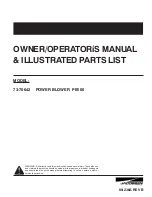
32
english
important safety instructions for all
battery Chargers
SAVE THESE INSTRUCTIONS:
This manual
contains important safety and operating
instructions for compatible battery chargers (refer to
Technical Data
).
• Before using charger, read all instructions and
cautionary markings on charger, battery pack,
and product using battery pack.
WARNING:
Shock hazard. Do not allow
any liquid to get inside charger. Electric
shock may result.
WARNING:
We recommend the use of
a residual current device with a residual
current rating of 30mA or less.
CAUTION:
Burn hazard. To reduce
the risk of injury, charge only
D
e
WALT
rechargeable batteries. Other types of
batteries may burst causing personal
injury and damage.
CAUTION:
Children should be
supervised to ensure that they do not
play with the appliance.
NOTICE:
Under certain conditions, with
the charger plugged into the power
supply, the exposed charging contacts
inside the charger can be shorted by
foreign material. Foreign materials of
a conductive nature such as, but not
limited to, steel wool, aluminum foil or
any buildup of metallic particles should
be kept away from charger cavities.
Always unplug the charger from the
power supply when there is no battery
pack in the cavity. Unplug charger
before attempting to clean
• DO NOT attempt to charge the battery pack
with any chargers other than the ones in
this manual.
The charger and battery pack are
specifically designed to work together.
• These chargers are not intended for any uses
other than charging
D
e
WALT
rechargeable
batteries.
Any other uses may result in risk of
fire, electric shock or electrocution.
• Do not expose charger to rain or snow.
• Pull by plug rather than cord when
disconnecting charger.
This will reduce risk
of damage to electric plug and cord.
• Make sure that cord is located so that it
will not be stepped on, tripped over, or
otherwise subjected to damage or stress
.
• Injuries caused by touching any rotating/moving
parts.
• Injuries caused when changing any parts,
blades or accessories.
• Injuries caused by prolonged use of a tool.
When using any tool for prolonged periods
ensure you take regular breaks.
• Impairment of hearing.
• Health hazards caused by breathing dust
developed when using your tool (example:- working
with wood, especially oak, beech and MDF.)
Markings on Tool
The following pictograms are shown on the tool:
Read instruction manual before use.
95
Wear ear protection.
95
Wear eye protection.
95
Do not expose the tool to rain or high
humidity or leave outdoors while it is
raining.
95
Switch the tool off. Before performing
any maintenance on the tool, remove the
battery from the tool.
95
Keep people and animals at least 6 m
away from the work area.
95
Keep bystanders away.
95
Directive 2000/14/EC guaranteed sound
power.
daTe Code posiTion (FiG. 9)
The date code (m), which also includes
the year of
manufacture, is printed into the housing.
Example:
2015 XX XX
Year of Manufacture
















































